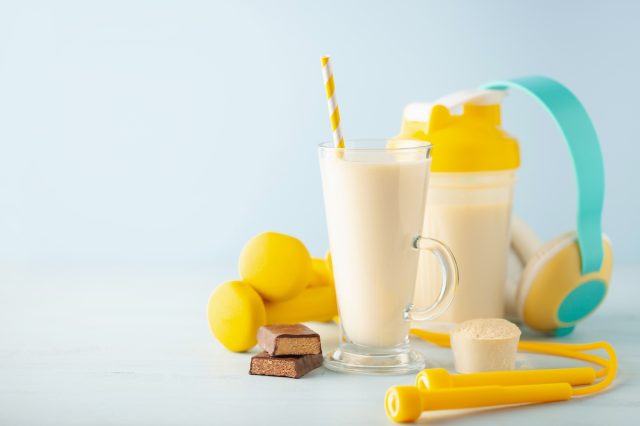Sarah Sjöström won a gold medal, two silver medals, and one bronze at the 2016 and 2020 Olympic Games, for swimming. Sjöström shared some of her favorite workouts in an Instagram video. In it, Sjöström is seen doing lunges, lateral pulldowns, and shoulder presses with dumbbells. She captioned the post, “Monday gym.” How does she stay so fit? Read on to see 5 ways Sarah Sjöström stays in shape and the photos that prove they work.

Sjöström also talked about her diet in her Irmas World interview. She says that she makes sure to eat enough protein. “There is no special diet. But during my hard training periods I try to make sure I eat enough protein and carbs to recover better. I don’t count calories, I have just learned how much I need. I also try to eat breakfast, lunch, dinner and snacks in between meals at the same time every day. During competitions, I have protein/energy bars and after competitions and trainings protein and carb shakes or bars help me regain my energy.“
Spending so much time in the water can be rough on your hair and skin. Sjöström shares how she manages it with Irmas World. “I have to put on face cream every time I get out of the pool, especially if I’m training in the sun (training camps with a outdoor pool) or during the winter in Sweden. I’m not using shampoo and conditioner much, and I’m not brushing my hair after every session. My hair gets used to the water and chlorine if I’m not using too many products . Then my hair gets stronger and much better quality.”
Sjöström shared her training routine in an interview with Irmas World. She says that she makes sure to be consistent. “Monday to Saturday I do a morning swim, Tuesday and Thursday also an afternoon swim. Monday, Wednesday and Friday afternoon it’s gym, Pilates or climbing. I never count how many hours I train. It always depends on what kind of session I’m doing. But usually it’s 8 swim session and 3 ‘dryland’ sessions.”


Sjöström is also seen doing pull-ups in her Instagram post. NASM reports that these are a great workout to do. “Biomechanically, pull ups use shoulder adduction as the elbows pull down and back from the sides during the movement, training the lats and upper back in a slightly different way than chin ups. Pull ups use the lats, rhomboids, traps, shoulders, posterior deltoids, and brachialis. Because of the overhand grip, your lats will do the majority of the work since they are getting less help from the biceps.”
In her Instagram post, Sjöström is seen strength training. According to Reid Health, strength training can help with your metabolism. “Increasing lean muscle mass increases your metabolism. According to the Mayo Clinic strength training builds muscle tissue which burns more calories than fat tissue. With consistent workouts your body fat will decrease and your clothes will be noticeably looser.”
